Dear Friends,
OVERVIEW
“Are Public Signages Really Effective or is there a better and more cost effective way ?”

We have many signs or signages; ‘No Fishing’, ‘No Smoking’, ‘No Littering’, just to name a few common ones, planted all over the island and all of them have a monetary deterrent amount clearly imprinted on them. The intent is obvious, that is, to remind and warn people not to err and to keep such public places or premises clean and safe. But, are the erected signages or sign boards in all our parks, gardens or reservoirs effective or working towards the intent?
The truth is, it is not. The amount of litter, including cigarette butts, plastic bags and styrofoam boxes picked up from Marina, Punggol, Lakeside waterways and at Pang Sua and Yishun Ponds and their adjacent parks and gardens collected by the Waterways Watch Society volunteers over the weekends and, by the weekday participants who come for the CSR and VIA programmes bear testimony to this. The number of illegal fishing sighted (almost daily) and reported have also never wavered for the better. In fact in both cases, we think it is on the rise.
Why is this so? It stems from the belief that there is no consequence for littering and for illegal fishing at our parks and waterways. Since people perceive that there is no consequence for their actions (of throwing items anyhow, anywhere and fishing anyhow and anywhere), it has created an attitude of ‘I don’t care!’ Many believe that there are others who will pick or clean it up or simply throw it in the water and it will be washed away. Signages are only good if there is consistent enforcement and re-enforcement by the relevant authorities. But we all agree that it is extremely challenging and costly.
Many know that litter adversely affects the environment; be it littering in the gardens and parks, along the roads, on the streets, in the drains or by the litter bins, the toxic materials or chemicals in the litter can be blown or washed into streams, rivers, lakes and ponds and, eventually pollutes the waterways, land, soils or aquatic environments. Cigarette butts, for instance, contain toxic substances like arsenic, which can contaminate both soil and water. But, how many know, in the Singapore case, that all our reservoirs will be gravely affected by such littering? How? Because we are collecting urban stormwater on a large scale, that is, every single drop of water that lands on our island is collected for consumption. Every single drop of surface water runs into our 17 reservoirs.
The next question we need to ask is how many Singaporeans know or understand what urban stormwater is. Our take is that many, both young and old, do not know. From our interactions with participants of our programmes many were even surprised to find out that the water in our waterways flows directly to our reservoirs and not to the open sea, that the surface water that flows in our drains go to our reservoirs and that it is costly to clean urban stormwater.
This brings us to our concern that there is a need for a more insightful approach to EDUCATING our people, both the young ones in schools and the adults including the Merdeka and Pioneer generations. The latter two are included because they would still have a substantial runway in life to have an impact on the community and the environment. Our message in the education process should not only focus on telling us what to do or not to do but, the rationale and the facts of the matter like we are harvesting urban stormwater, the implications of litter in our waters and what it means to us. This insightful educational approach as part of National Education cannot be overemphasised because for a small country like ours having to have 70,000 cleaners to clean after us is a troubling thorn in our soul as a nation. We desperately need a new strategy to tackle this problem.
In summary, the following activities were done for the week:
- We conducted 5 CSR programmes which were attended by 175 participants and they collected a total of 219 kg of litter.
- We conducted 2 Learning journeys and both were done at Lower Seletar reservoir, which were attended by 43 students.
- A member participated as a judge in a virtual presentation, ‘Protect our Waters Challenge Design Challenge’ organised by Autodesk.
- A virtual briefing was conducted for 13 new members on their roles and responsibilities.
- This week a total of 94 members were involved for CSR/VIA programmes, talk, patrols, administration, housekeeping duties and training and, the total trash collected = 273 kg.
- Boat Patrol. A total of 7 Boat patrols were carried out; 3 at Marina, 3 at Punggol and 1 at Lakeside.
- Bike Patrol. A total of 4 Bike patrols were carried out; 2 at Marina, 1 each at Punggol and Lakeside.
- Foot Patrol. We conducted 1 Foot Patrol at Pang Sua Pond and its adjacent park.
- Pedal boat Patrol. No Pedal Boat patrol was conducted at Marina.
- Physical Bike and Boat Clean Up Orientation for New Applicants. No orientation was conducted.
- Boat Tour for Frontline workers. Our CEO conducted a briefing before the boat tour for 6 Frontline nurses at Marina.
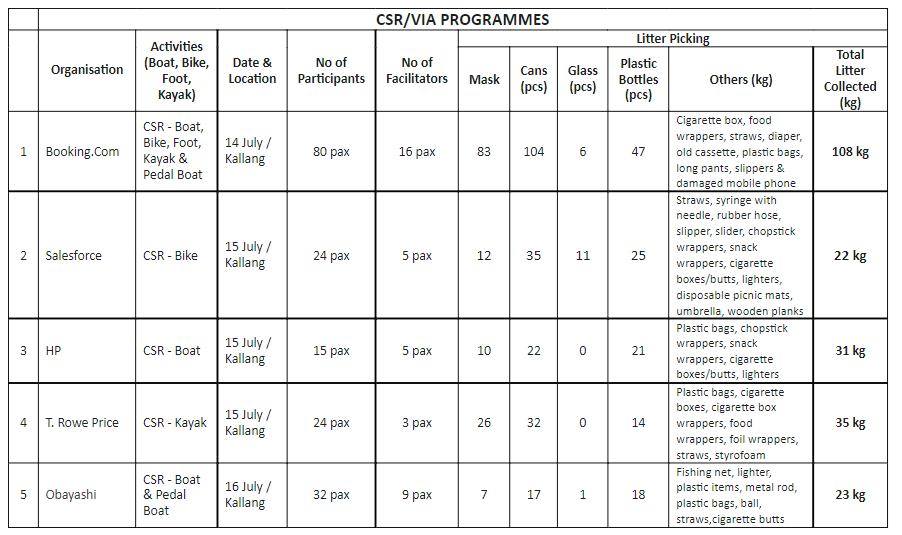
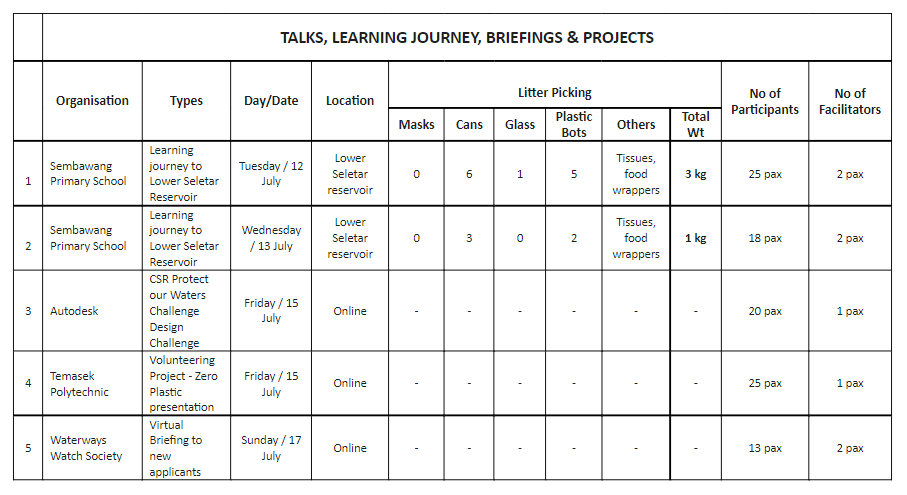
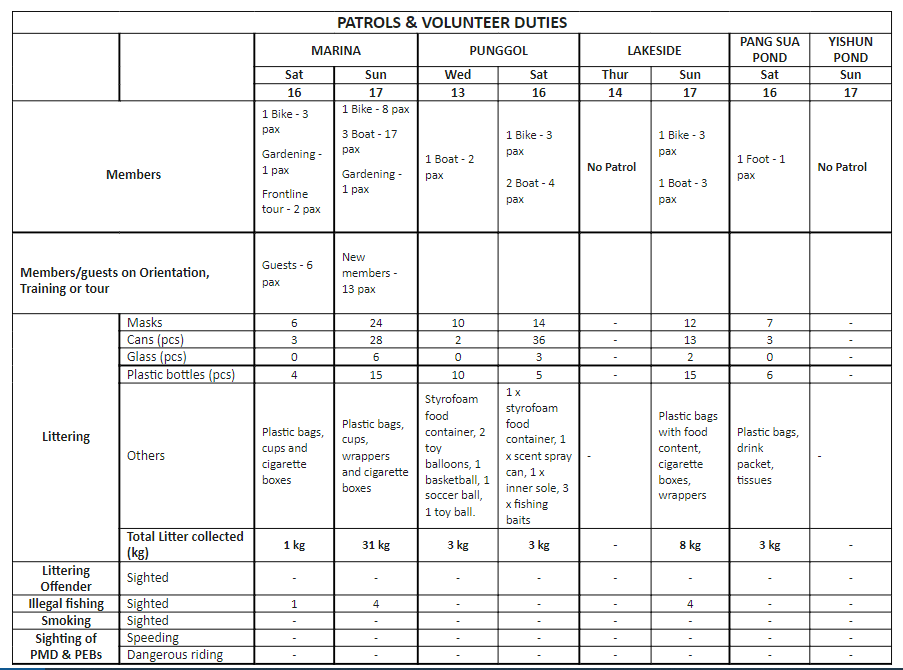
ACTIVITIES AND REPORT
1. Educational Programmes

2. Volunteer Patrols & Activities
a. Marina
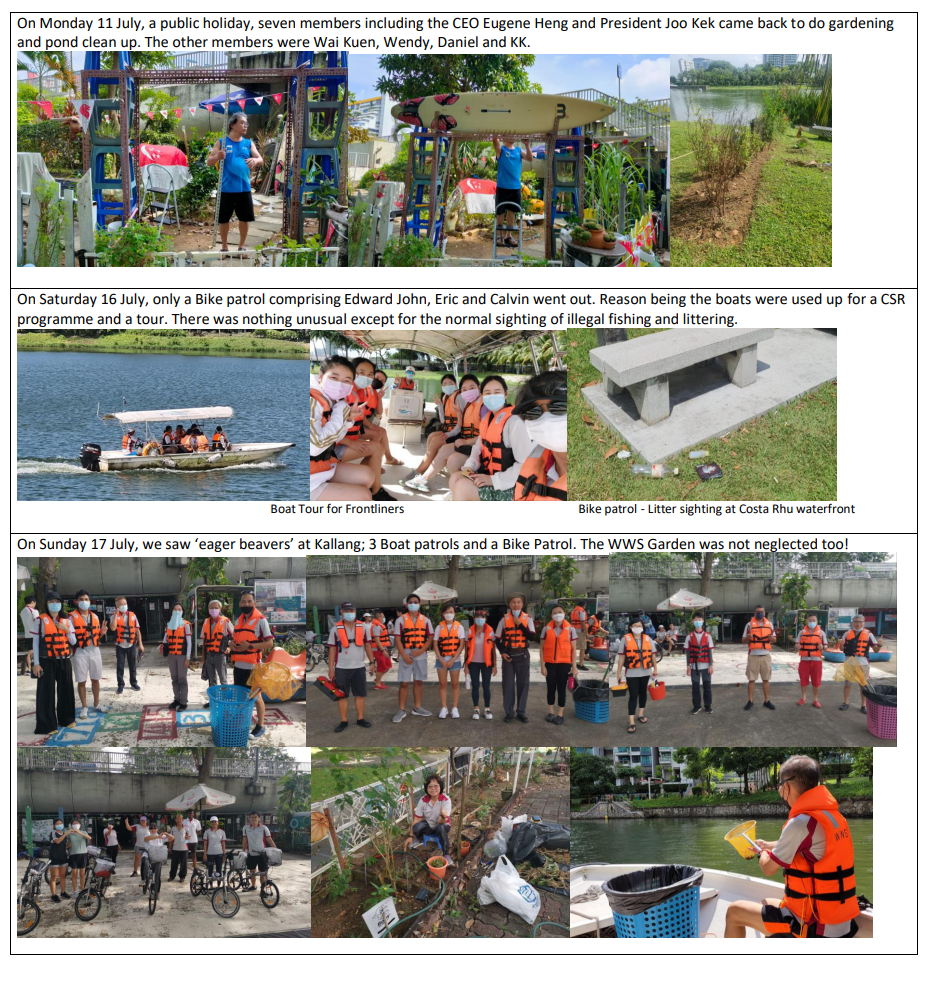
b. Punggol
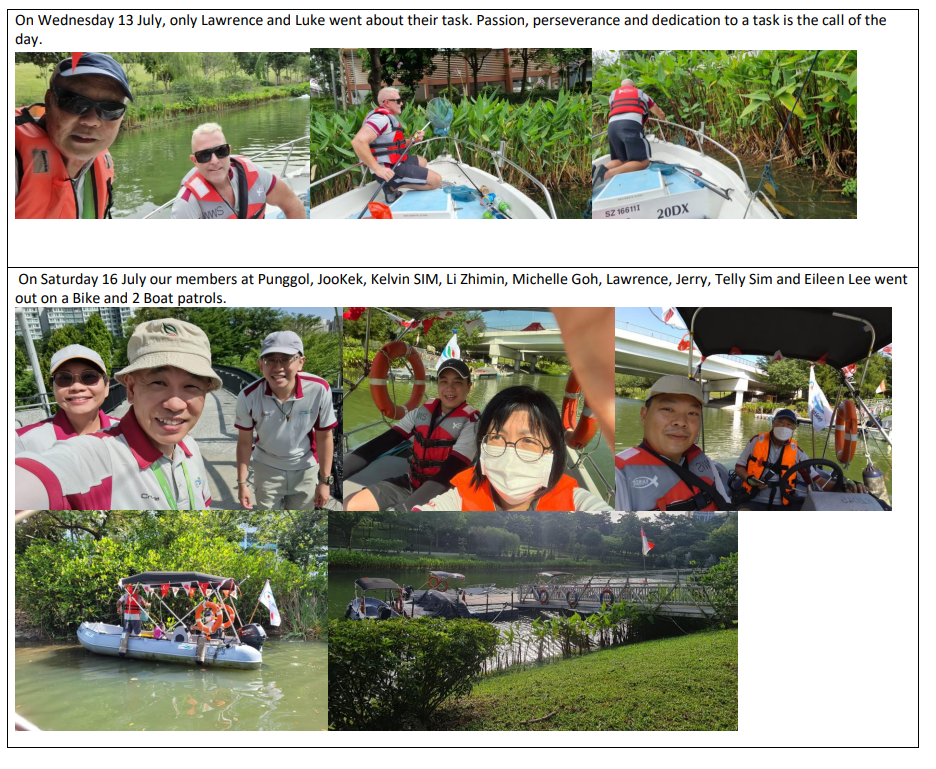
c. Lakeside

d. Pang Sua Pond

e. Yishun Pond Patrol

